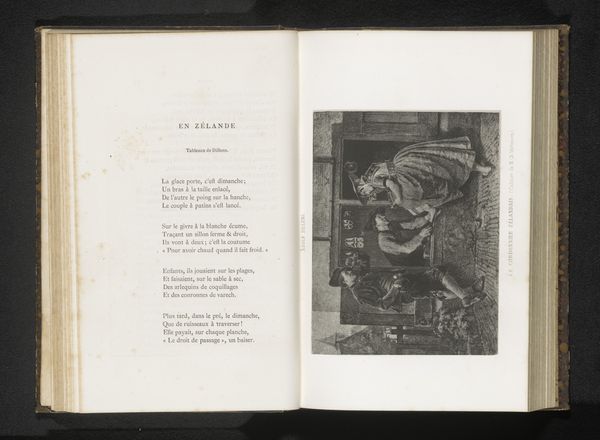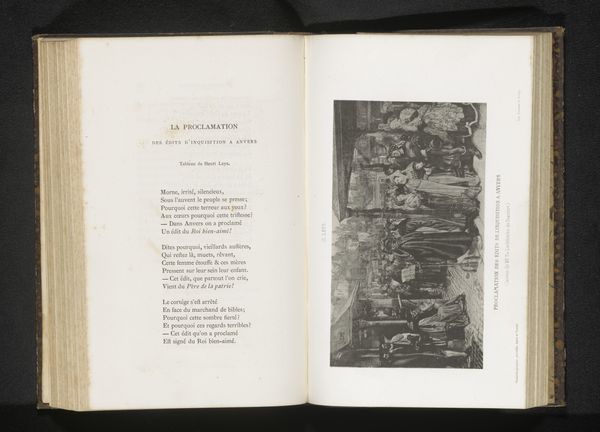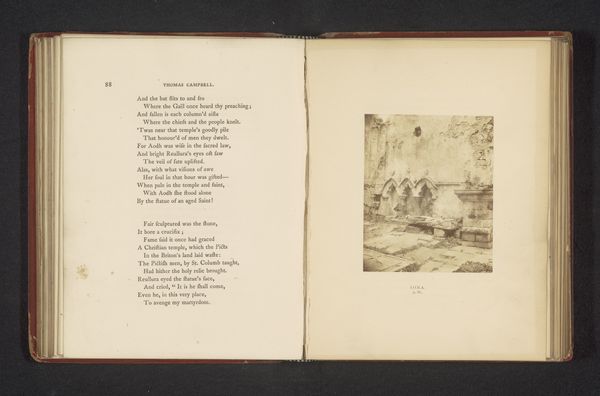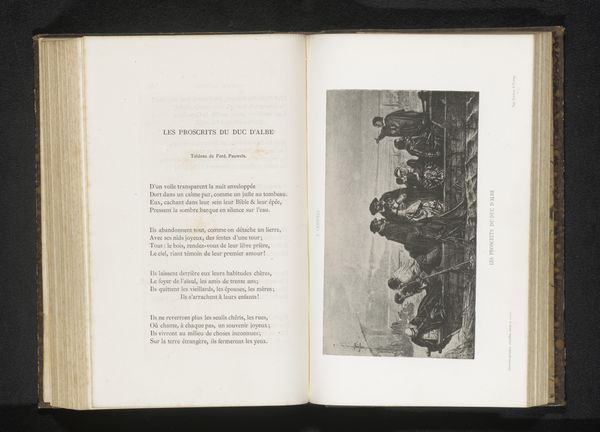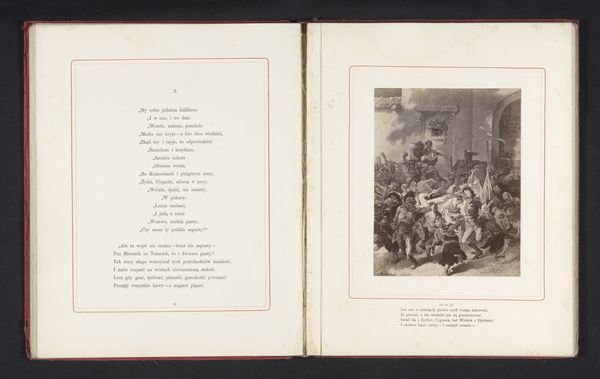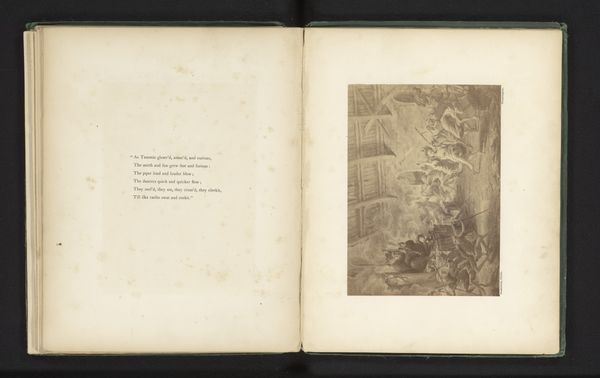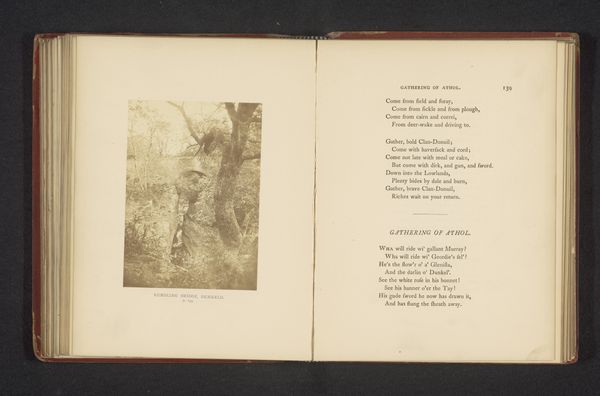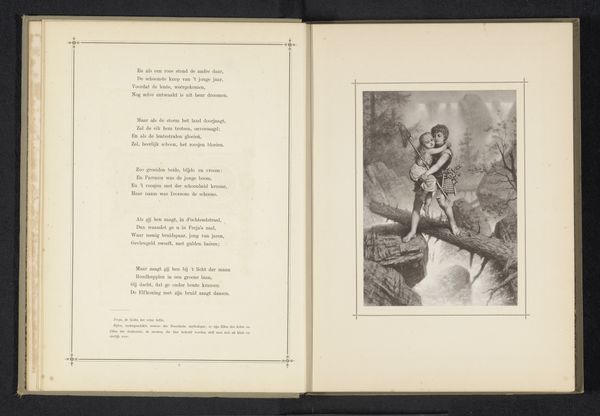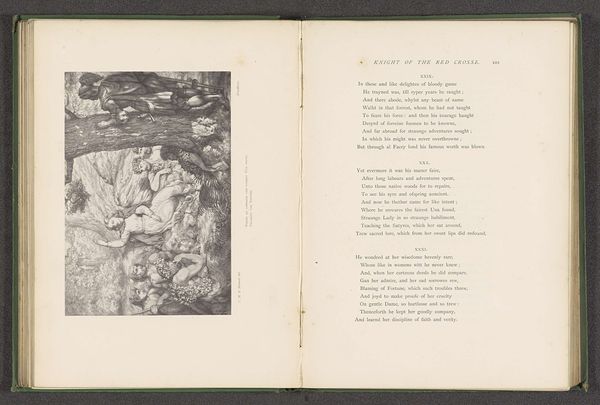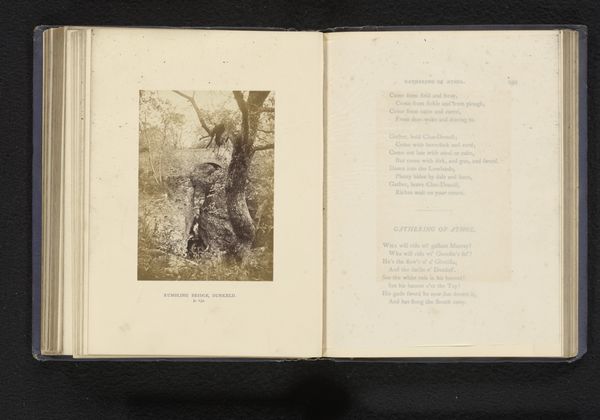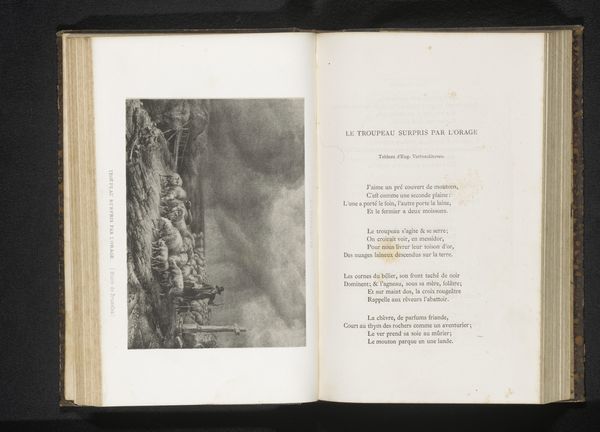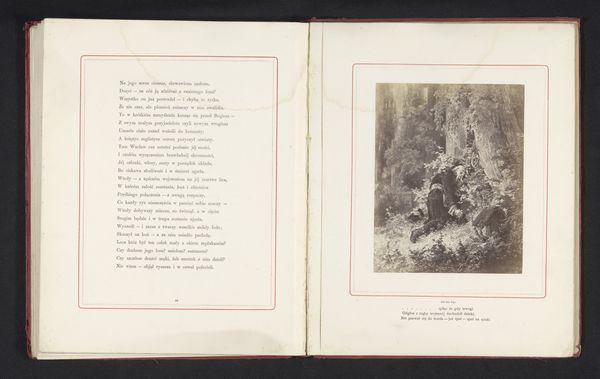
drawing, print, etching, paper, engraving
#
drawing
#
aged paper
#
book binding
#
homemade paper
#
paper non-digital material
#
narrative-art
#
paperlike
# print
#
etching
#
paper texture
#
paper
#
folded paper
#
thick font
#
letter paper
#
paper medium
#
engraving
Dimensions: height 112 mm, width 145 mm
Copyright: Rijks Museum: Open Domain
Curator: Here at the Rijksmuseum, we have an intriguing reproduction, likely an etching or engraving, of "Le Croquis" by Jean Baptiste Madou, dating to before 1867. Editor: My first thought? Chaotic and cramped. It’s a snapshot of… something illicit? The heavy lines contribute to a sense of confinement. Curator: Note the contrast. On the left, a dense image. Opposite, you see delicate letterpress on what appears to be aged paper. Someone invested time and skill in the etching and binding. We must also remember, the artwork itself depicts a sketch or “croquis,” hinting at layers of production and reception. Editor: Absolutely. Look at the visual vocabulary— figures tumbling across each other, a sense of bacchanal. This evokes a tradition of symbolic depictions of earthly delights but presented here with a darker tone. There seems to be something about the transience of pleasure captured. Curator: Perhaps it speaks to 19th-century printing techniques. Notice how the print quality, while detailed, adds to the mood through its rough edges and imperfect tonal range. Mass production allowed art and literature to mix. What might a contemporary viewer of this “reproduction” think about consuming art in this format? Editor: Considering "le croquis" suggests a quickly executed drawing, the meticulous engraving process transforms the original gesture. This lends layers of irony and introspection to a scene brimming with implied narratives—figures perhaps sleeping off excesses. They look to be crammed into what I take is the artist's studio. Curator: Very good point! By bringing it into this portable, reproducible format, it invites a dialogue about what is being presented and who could have access. It really encourages considering what these production methods allowed, but also lost from the original artistic experience. Editor: I come away sensing melancholy despite the debauchery depicted, reflecting maybe the artist's unease with fleeting pleasures or perhaps societal anxieties of the era now rendered in ink and paper for our interpretation.
Comments
No comments
Be the first to comment and join the conversation on the ultimate creative platform.

